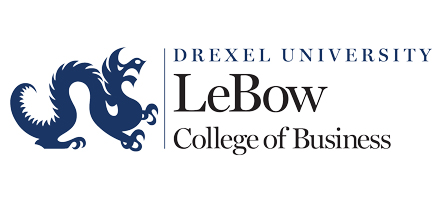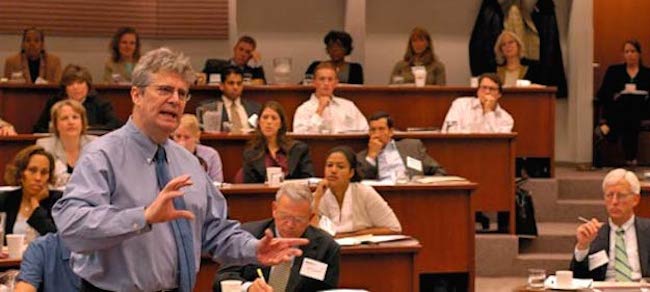After holding onto first place in U.S. New & World Report’s ranking of the best Executive MBA programs for many years, the University of Pennsylvania’s Wharton School has been nudged aside by its midwestern finance rival. The University of Chicago’s Booth School of Business tops the new ranking of EMBA programs published March 10th by U.S. News for the first time.
Besides the big change at the top, most of the top ten EMBA programs maintained their year-earlier rankings with just two exceptions. The University of Michigan’s Ross School and New York University’s Stern School of Business switched places, with Ross climbing one spot to place sixth and Stern slipping one place to rank seventh.
The bigger changes on this year’s U.S. News’ list hit several highly prominent business schools. Washington University’s Olin School of Business, which has EMBA programs in St. Louis and Denver, saw the steepest year-over-year decline, falling 11 places from 12th last year to a tie with Emory University’s Goizueta School for 23rd. The University of Southern California’s Marshall School EMBA program tumbled nine places to rank 20th, while Emory’s EMBA slipped seven spots to earn its tie with Emory at 23rd.
HOW SERIOUSLY SHOULD YOU TREAT THE U.S. NEWS RANKING OF EMBA PROGRAMS?
The school with the biggest lift? Southern Methodist University’s Cox School saw its Executive MBA program rise three places to 13th on the list from 16th a year ago.
U.S. News ranked ranked 24 EMBA programs this year compared to just 18 in 2014. One school fell off the list entirely: Santa Clara University’s Leavey School of Business which had been ranked 18th. This year’s newcomers: The University of Virginia’s Darden School, which had slipped off the list last year, MIT Sloan, Notre Dame University’s Mendoza School, Indiana University’s Kelly School of Business, and the University of Washington’s Foster School. Seattle University and Xavier University, both of which had been ranked in a tie at 19th in 2013 but disappeared last year, made a reappearance.
How seriously should an applicant take the U.S. News ranking? Not very. It’s more important for bragging rights than anything else. Unlike the magazine’s full-time MBA ranking, which takes into account such quality measures as the average GMAT and GPA scores of incoming students as well as the starting salary and bonus and placement rates for the latest graduating class, the EMBA ranking is based on a single survey of business school deans and directors of accredited master’s programs.
THE RANKING HAS BEEN CRITICIZED AS ‘A COLLECTION OF PREJUDICES’
They were asked to nominate up to 10 EMBA programs for excellence. The schools receiving. Schools receiving seven or more nominations are listed and are numerically ranked in descending order based on the number of nominations they received. So it’s possible that schools ranked at the bottom received only seven votes. U.S. News said that about 40% of those surveyed responded, but it did not disclose the actual number of respondents nor the response rate for the survey.
When New Yorker writer Malcolm Gladwell wrote his scathing critique of U.S. News’ methodology four years ago (see Malcolm Gladwell Trashes Rankings), his severest comments were reserved for the poll of deans, which is just one of seven core metrics in the full-time MBA ranking. Gladwell asserted that asking deans and MBA program directors to rate other schools is less a measure of a school’s reputation than it is a collection of prejudices partly based on the self-fulfilling prophecy of U.S. News’ own rankings.
“It’s far from clear how any one individual could have insight into that many institutions,” concluded Gladwell. “Sound judgments of educational quality have to be based on specific, hard-to-observe features. But reputational ratings are simply inferences from broad, readily observable features of an institution’s identity, such as its history, its prominence in the media, or the elegance of its architecture. They are prejudices.”
MANY EXCELLENT PROGRAMS ARE DONE A DISSERVICE BY THE RANKING
These “prejudices” tend to loom even larger toward the second half of the list than it is at the top where the choices are based on larger sample sizes. But as U.S. News concedes, only seven nominations could get a school on the list toward the bottom. It’s probable that the reason why superb programs at Emory, Washington University, and the University of Southern California fell so much this year is the sole result of inadequate sample sizes. So few people voted–and not the same from the previous year–that it caused those three programs to drop substantially in the ranking.
Then, there are the less-than-credible results. It strains credulity to think that MIT Sloan’s excellent Executive MBA program, which is ranked 15th and graduated its first EMBA class in 2012, could be ranked below St. Joseph’s University in Philadelphia, which is ranked two places higher at 13th. Or, for that matter, that St. Joseph’s program would be ranked above the programs at such highly ranked schools as Notre Dame, the University of Texas, Indiana University, Southern California, Washington University, Emory, and the University of Washington.





